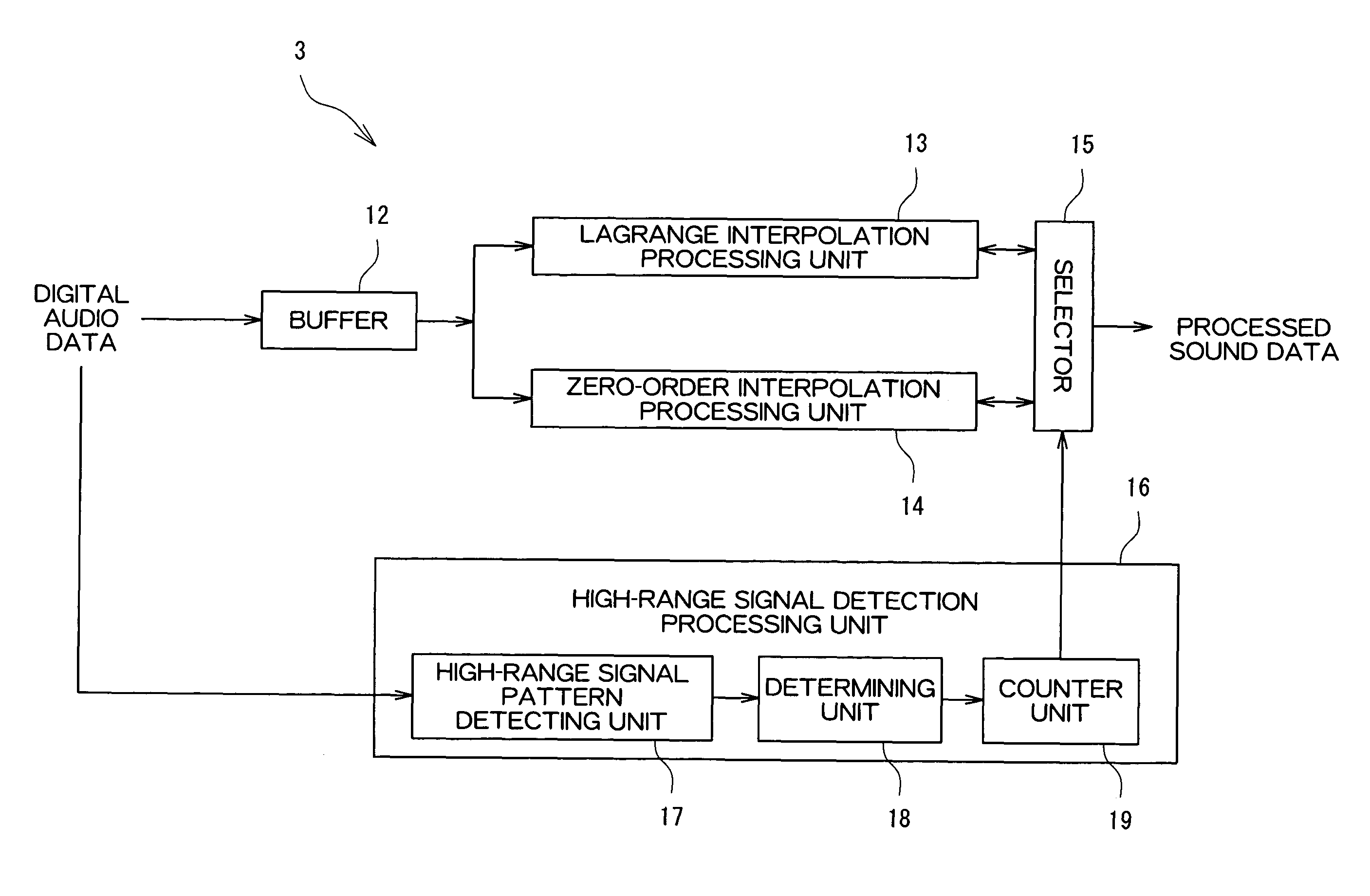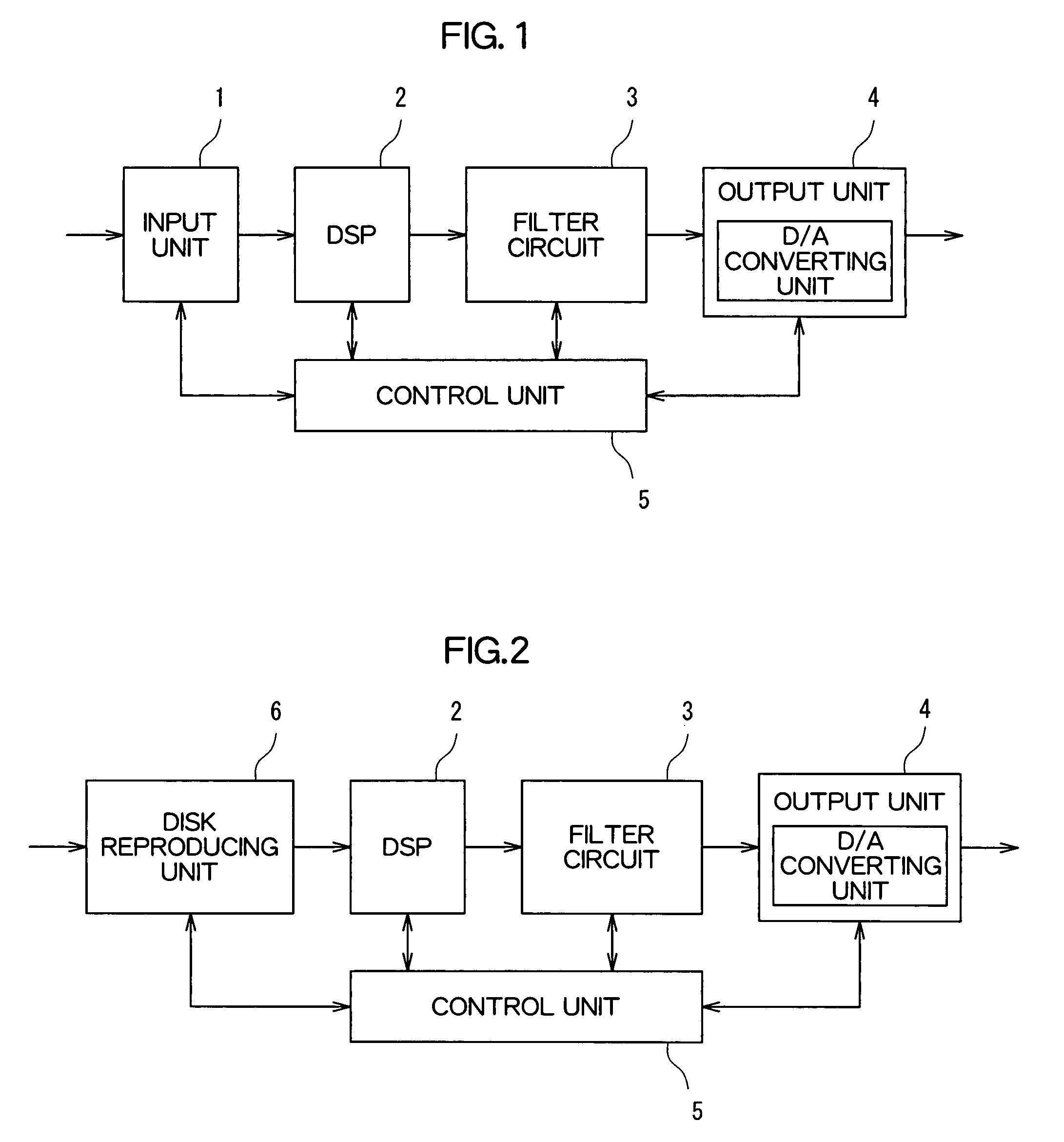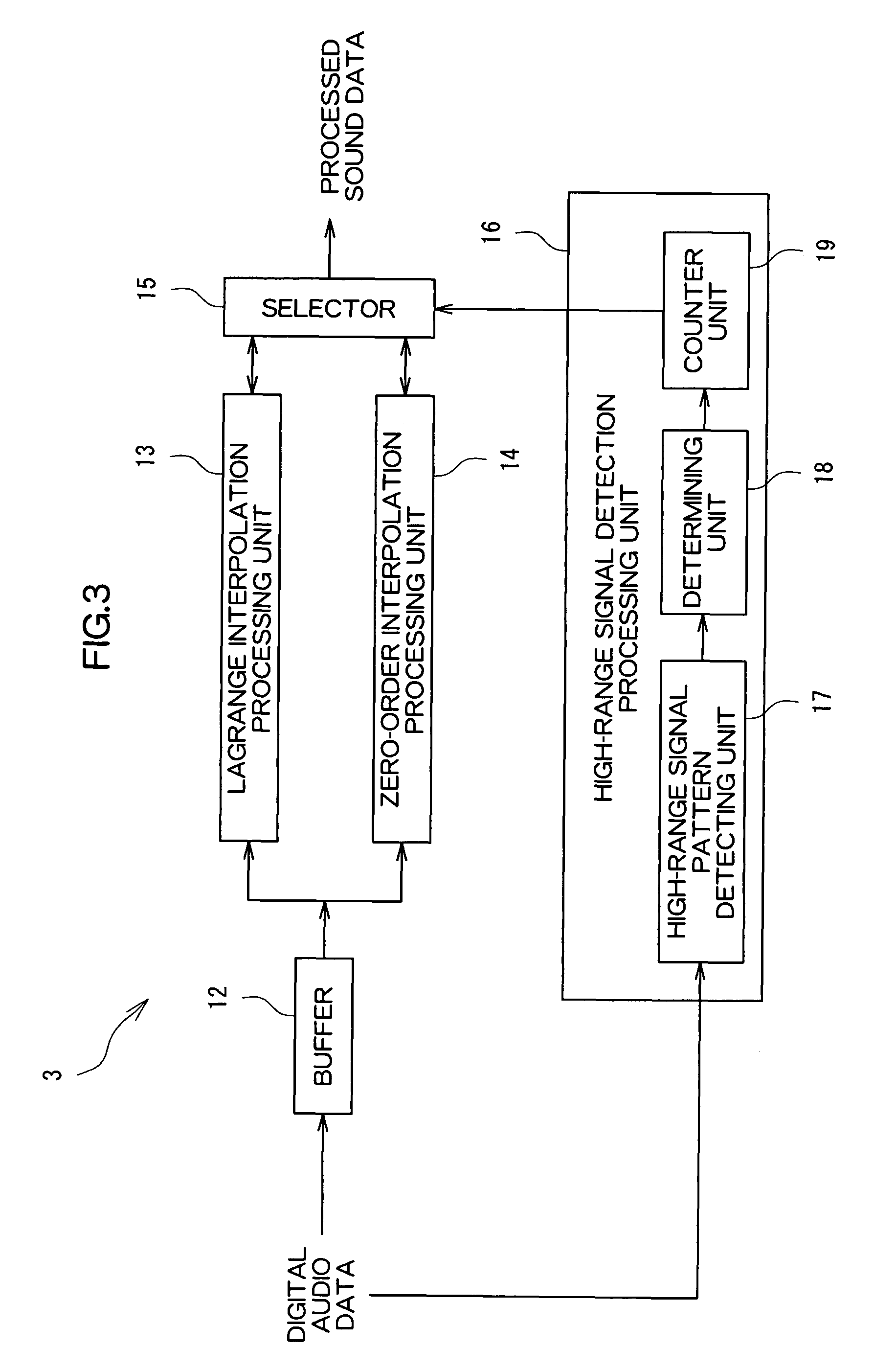Adaptive interpolation in upsampled audio signal based on frequency of polarity reversals
a technology of polarity reversal and upsampling, which is applied in the direction of code conversion, recording signal processing, instruments, etc., can solve the problems of inability to reproduce the sound of compact discs in which high-range components are not reproduced, short smoothing degrees of the obtained signal waveform, and inability to achieve reproducibility with fidelity in the vicinity of high-range components. , to achieve the effect of avoiding signal discontinuation
- Summary
- Abstract
- Description
- Claims
- Application Information
AI Technical Summary
Benefits of technology
Problems solved by technology
Method used
Image
Examples
Embodiment Construction
[0043]Referring now to the figures, an example of embodiments of the present invention will be described.
[0044]FIG. 1 is a block diagram of an audio signal output device according to an embodiment of the present invention. The audio signal output device shown in FIG. 1 includes an input unit 1, a DSP (Digital Signal Processor) 2, a filter circuit 3, an output unit 4, and a control unit 5. The audio signal output device is an amplifying apparatus such as an audio visual (AV) amplifier. Digital audio data output from a reproducing apparatus such as a CD (Compact Disk) player and a DVD (Digital Versatile Disc) player is input to the audio signal output device.
[0045]The input unit 1 accepts an input of the digital audio data (digital audio signal) from the reproducing apparatus.
[0046]The DSP 2 performs signal processing such as expansion and adding of reverberation sound with respect to the digital audio data input to the input unit 1.
[0047]The filter circuit 3 performs filtering proces...
PUM
 Login to View More
Login to View More Abstract
Description
Claims
Application Information
 Login to View More
Login to View More - R&D
- Intellectual Property
- Life Sciences
- Materials
- Tech Scout
- Unparalleled Data Quality
- Higher Quality Content
- 60% Fewer Hallucinations
Browse by: Latest US Patents, China's latest patents, Technical Efficacy Thesaurus, Application Domain, Technology Topic, Popular Technical Reports.
© 2025 PatSnap. All rights reserved.Legal|Privacy policy|Modern Slavery Act Transparency Statement|Sitemap|About US| Contact US: help@patsnap.com



